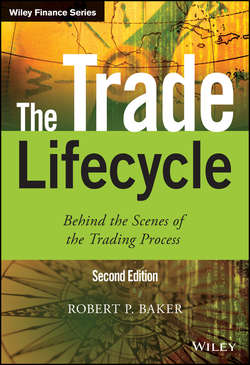Читать книгу The Trade Lifecycle - Baker Robert P. - Страница 31
Part One
Products and the Background to Trading
Chapter 3
Understanding Traded Products – Follow the Money
3.9 Option
ОглавлениеOptions are discussed in section 5.2. Here we shall discuss the cashflows related to the purchase of an option. Remember that the value of an option is very different from the cashflows. The value diagrams are also in section 5.2.
The basic mechanics of purchasing an option are the payment of a fixed premium at the start of the trade and the possibility of a payout at some future time, depending on how market prices change relative to an agreed fixed price, known as the strike.
A European option can, by definition, only be exercised at one time in the future. This means the time of the payout cashflow is known from the start. Whether there will be any payout at all and the size of the payout, cannot be known until the exercise date.
American options can be exercised at any time up to the final exercise date (effectively the close of the trade). Therefore both the time and the size of the payout cashflow are completely unknown. The buyer can exercise at any time or not exercise at all.
Options can be either physical or cash. Figure 3.13 shows the payout in black, representing a physical return should the option be exercised. A cash option would calculate the value of the physical underlying entity at payout and convert that amount to cash, so nothing other than cash would be exchanged.
Figure 3.13 Cashflows on an American option trade
Note that options can be applied to most asset classes. For example, a physical equity option, if exercised, would pay out in shares. A physical commodity option would pay out in some commodity, such as cocoa beans or palladium. This is a good example of how a financial product transcends the asset class and has the same features and cashflows across all asset classes.
